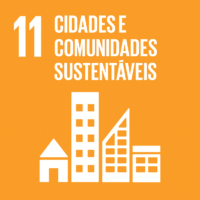Ciência_Iscte
Publicações
Descrição Detalhada da Publicação
Form, design and construction of ribbed vaults. João de Castilho’s innovations in the Jerónimos Monastery, Lisbon (1470-1552)
Título Revista
Construction History
Ano (publicação definitiva)
2018
Língua
Inglês
País
Reino Unido
Mais Informação
Web of Science®
Scopus
Google Scholar
Esta publicação não está indexada no Google Scholar
Esta publicação não está indexada no Overton
Abstract/Resumo
The vaults of the Jerónimos Monastery church in Lisbon are a remarkable example of late Gothic. Their span and continuous form achieve the goal of spatial unity sought after across Europe at the time. A single barrel vault covers the nave and the side aisles, while the transept is the largest built at the time. No other similar vault could be found amongst about a thousand European vaults. This paper stems from a PhD research (Soraya Genin, 2014) and concerns the issue of form: how form was created, acknowledging that it draws directly from principles applied for its design and construction. Shaping a unified vault with a single curved ridge line and central figures is Castilho’s (c.1470-1552) most remarkable innovation. The span of the vault is broadened through the use of “compound ribs”, a new typology created in this research. The author observed the methods used at the time to understand João de Castilho’s vault design, and put forward design and construction hypothesis for each type of vault. This method demonstrates that it was possible to build vaults without many preliminary drawings, using multiple, standardized ribs. The only requirement was to follow a sequence to position the centrings, using Rodrigo Gil de Hontañon’s method.
Agradecimentos/Acknowledgements
--
Palavras-chave
Ribbed vaults,Form,Design and construction,Joao de Castilho,Rodrigo Gil de Hontation,Santa Maria de Belem church,Jeronimos Monastery,Portugal and Europe,Manueline,Late Gothic
Classificação Fields of Science and Technology
- Engenharia Civil - Engenharia e Tecnologia
- História e Arqueologia - Humanidades
- Artes - Humanidades
Contribuições para os Objetivos do Desenvolvimento Sustentável das Nações Unidas
Com o objetivo de aumentar a investigação direcionada para o cumprimento dos Objetivos do Desenvolvimento Sustentável para 2030 das Nações Unidas, é disponibilizada no Ciência_Iscte a possibilidade de associação, quando aplicável, dos artigos científicos aos Objetivos do Desenvolvimento Sustentável. Estes são os Objetivos do Desenvolvimento Sustentável identificados pelo(s) autor(es) para esta publicação. Para uma informação detalhada dos Objetivos do Desenvolvimento Sustentável, clique aqui.

 English
English


